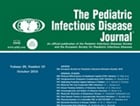Abstract and Introduction
Abstract
Objectives: To evaluate reports that describe relapse or recurrence following treatment of perineal streptococcal dermatitis (PSD), we studied a large cohort of children with these perianal or perivaginal infections to determine whether outcomes are related to the antimicrobial agent selected for initial treatment.
Methods: We audited laboratory logs and medical records to retrospectively identify incident cases of culture-confirmed PSD in children at a large university-affiliated health system during 2006–2008. We estimated rates of recurrence (defined as any return visit with a clinical diagnosis of perineal dermatitis within 6 months) and, then, incorporated these rates into a meta-analysis that included 8 previous studies.
Results: A total of 81 children had incident PSD during the study period, and 26 (32.1%) had a recurrence. Most (18/26 [69.2%]) had their first recurrence within 6 weeks. Among children treated with an oral agent, the recurrence rate was 16/42 (38.1%) following penicillin or amoxicillin and 10/36 (27.8%) following a beta-lactamase resistant agent (adjusted odds ratio: 2.02 [95% confidence interval {CI}: 0.69–5.92]). In the meta-analysis, recurrence rates following penicillin or amoxicillin were consistent across studies (fixed-effect test for heterogeneity, P = 0.35), and the pooled rate (37.4% [95% CI: 28.8%–46.5%]) was higher than observed following a beta-lactamase resistant agent (odds ratio: 2.39 [95% CI: 1.18–4.81]).
Conclusions: Perineal streptococcal dermatitis initially treated with penicillin or amoxicillin is consistently associated with a high risk of clinical recurrence. Whether treatment with a beta-lactamase resistant agent reduces this risk is uncertain and should be subjected to a clinical trial.
Introduction
Perineal streptococcal dermatitis (PSD) describes a spectrum of perianal or perivaginal infections with group A beta-hemolytic streptococcus (GABHS) that are characterized by localized rash, pain, and pruritus.[1,2] PSD is much less common than GABHS pharyngitis,[3–6] and information about its treatment is limited to observational studies[2,4,6–9] and a single randomized trial[10] that individually describe small numbers (range, 4–31) of affected children.
Oral penicillin or amoxicillin is commonly recommended for the initial treatment of PSD[11,12] despite reports that clinical recurrence may occur in as many as 43% of children treated with these agents.[4,9] Various beta-lactamase resistant agents have been proposed as alternatives, but evidence for their effectiveness is limited to uncontrolled observations in small numbers of children treated with amoxicillin-clavulanate,[13] cephalexin,[14] macrolides,[2,8] or clindamycin.[4] Cefuroxime is the only proposed alternative treatment for PSD to have been evaluated in a randomized clinical trial.[10] Compared with oral penicillin, cefuroxime appeared to speed resolution of symptoms and eradication of perianal streptococcal colonization, but it is unknown whether it reduces the risk of recurrence. The 2009 Report from the Committee of Infectious Diseases of the American Academy of Pediatrics (Red Book) mentions streptococcal "perianal cellulitis" and "vaginitis" only briefly and offers no guidance about the treatment of PSD.[15]
We studied retrospectively a large series of children with PSD to describe the clinical features, frequency, and risk factors for clinical recurrence. We also attempted to increase the precision of our risk estimates by pooling recurrence rates with data abstracted from selected, previously published studies. Our specific objective was to determine whether clinical recurrence is more common when children with PSD are treated with beta-lactamase susceptible agents than alternative agents.
Pediatr Infect Dis J. 2011;30(11):933-936. © 2011 Lippincott Williams & Wilkins
Cite this: Outcomes in Children Treated for Perineal Group A Beta-hemolytic Streptococcal Dermatitis - Medscape - Nov 01, 2011.






